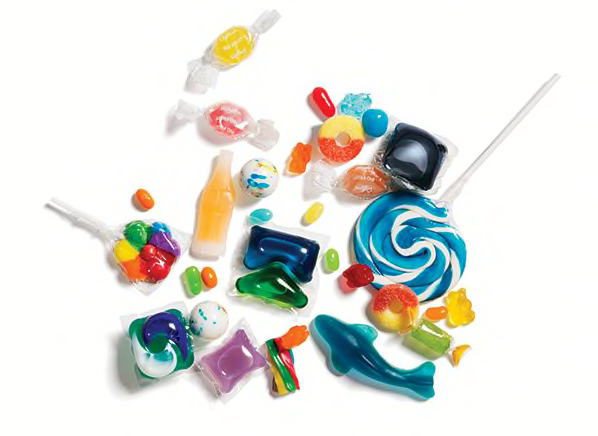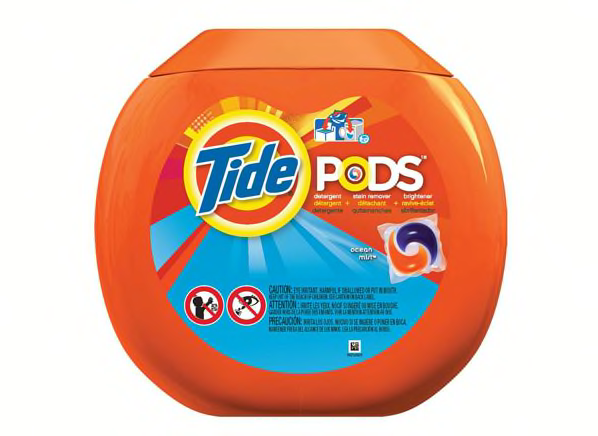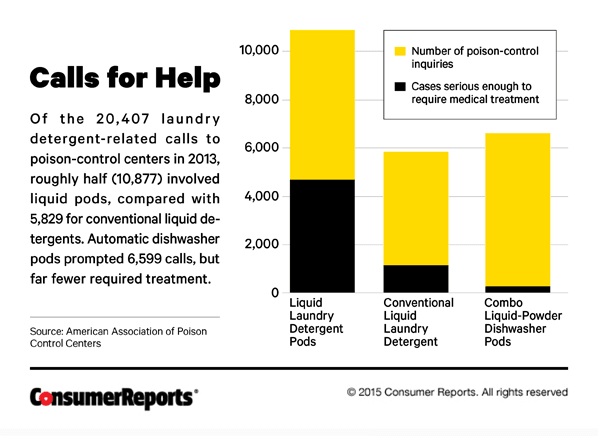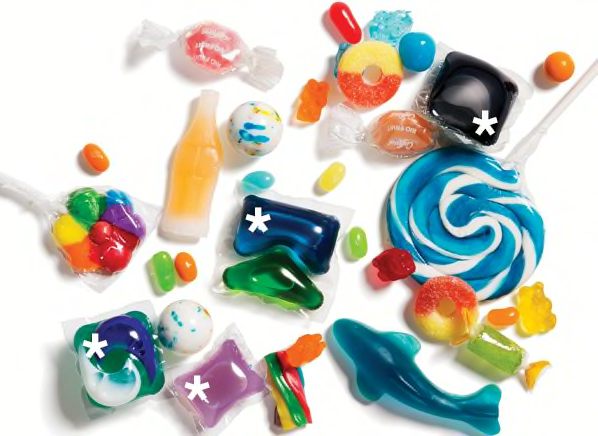Soon after the launch of liquid laundry pods, manufacturers started looking for ways to make the product safer. Procter & Gamble, maker of Tide Pods, came out with an opaque hard-plastic container with three safety latches and added more prominent safety warnings. Kirkland Signature, Costco's private label, implemented similar package improvements. And the American Cleaning Institute, which represents the detergent industry, launched a 2013 campaign to educate consumers about the proper use of liquid pods.
From the industry's perspective, those efforts are paying off, especially in light of pods' growing market share, which is currently around 12 percent. "We are seeing signs that the rate of accidents relative to the number of P&G laundry pacs sold is declining from when they were first were introduced to the marketplace," says Anitra Marsh, P&G's associate director of brand communications.
Manufacturers' injury data (like their proprietary product formulas) are not public information, so we can't confirm P&G's claim. But we believe that 10,000-plus exposures per year are still too many, regardless of market share. In addition to making the decision to not recommend liquid laundry pods, our safety experts have been active participants in the development of a voluntary safety standard for pods led by ASTM International, the global standards-writing organization for a variety of consumer products. "Parents and caregivers deserve a robust standard that makes it as difficult as possible for children to be poisoned by these packets," says Elliot F. Kaye, chairman of the Consumer Product Safety Commission.
The process is ongoing, but the latest draft, released in June, called for several important changes to pods that have already been implemented in Europe, including the addition of a bittering agent to give them a bad taste; a higher "burst strength" to make them more difficult to bite into; and a slower dissolve rate, so they'll be less likely to open in a child's mouth. (As we were going to press, P&G announced that it would be making those changes regardless of the standard's final vote, and Dropps and Sun Products, maker of All and Wisk, said they would add a bittering agent.) During the comment period to the standard's initial draft, we also called for each pod to have an additional individual wrapper, providing another line of defense, but that measure was not adopted.
Members of Congress, including Rep. Jackie Speier, D-Calif., and Sen. Richard Durbin, D-Ill., have also weighed in with the introduction of the Detergent PACS (Poisoning and Child Safety) Act of 2015. The bill would require the CPSC to establish safety standards with additional protections. Manufacturers would have to make the design of the pods less attractive by, for example, eliminating their enticing candylike appearance and scent. They'd also have to address the composition of the detergent itself to make the consequences of exposure less severe.



























